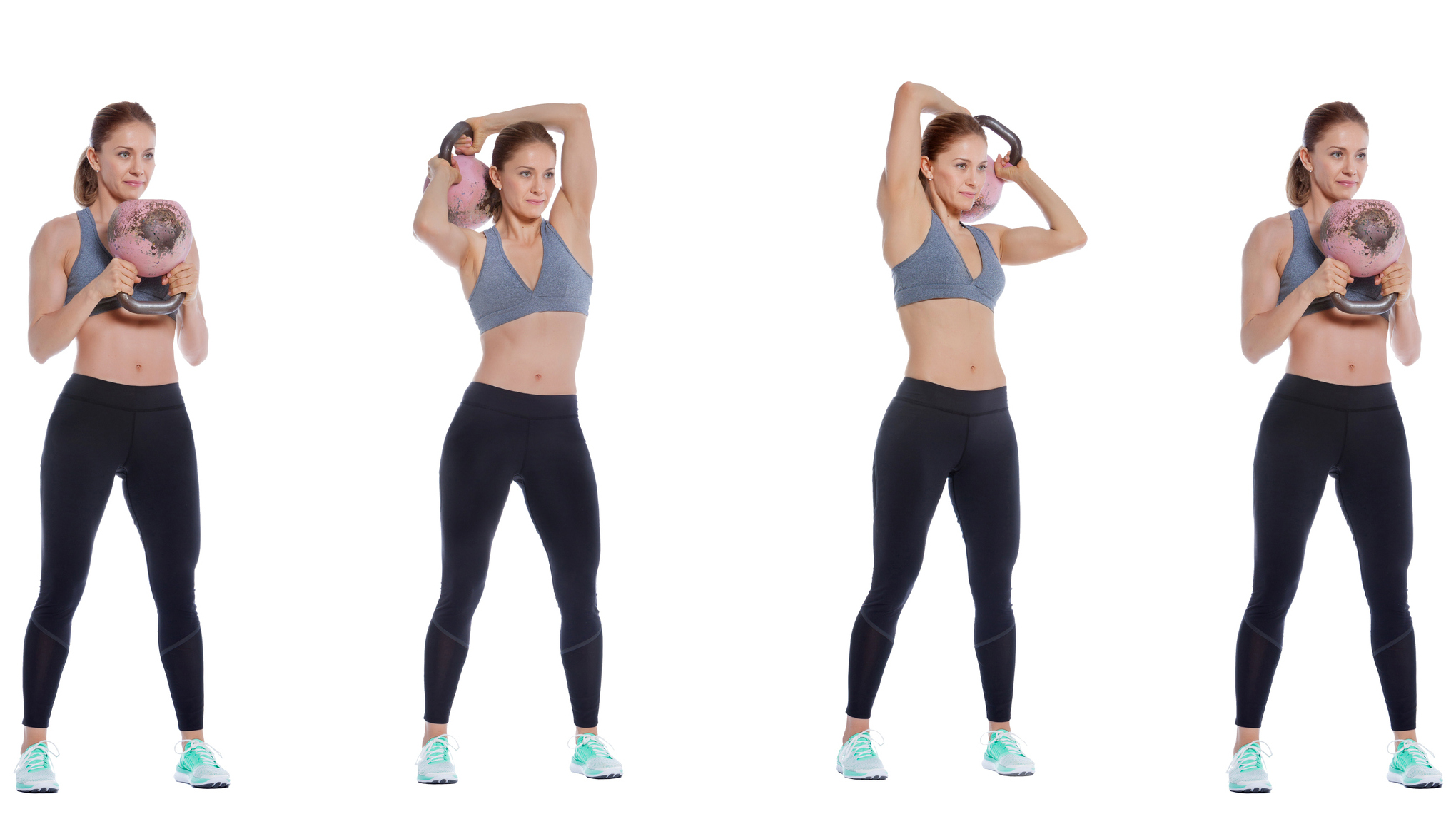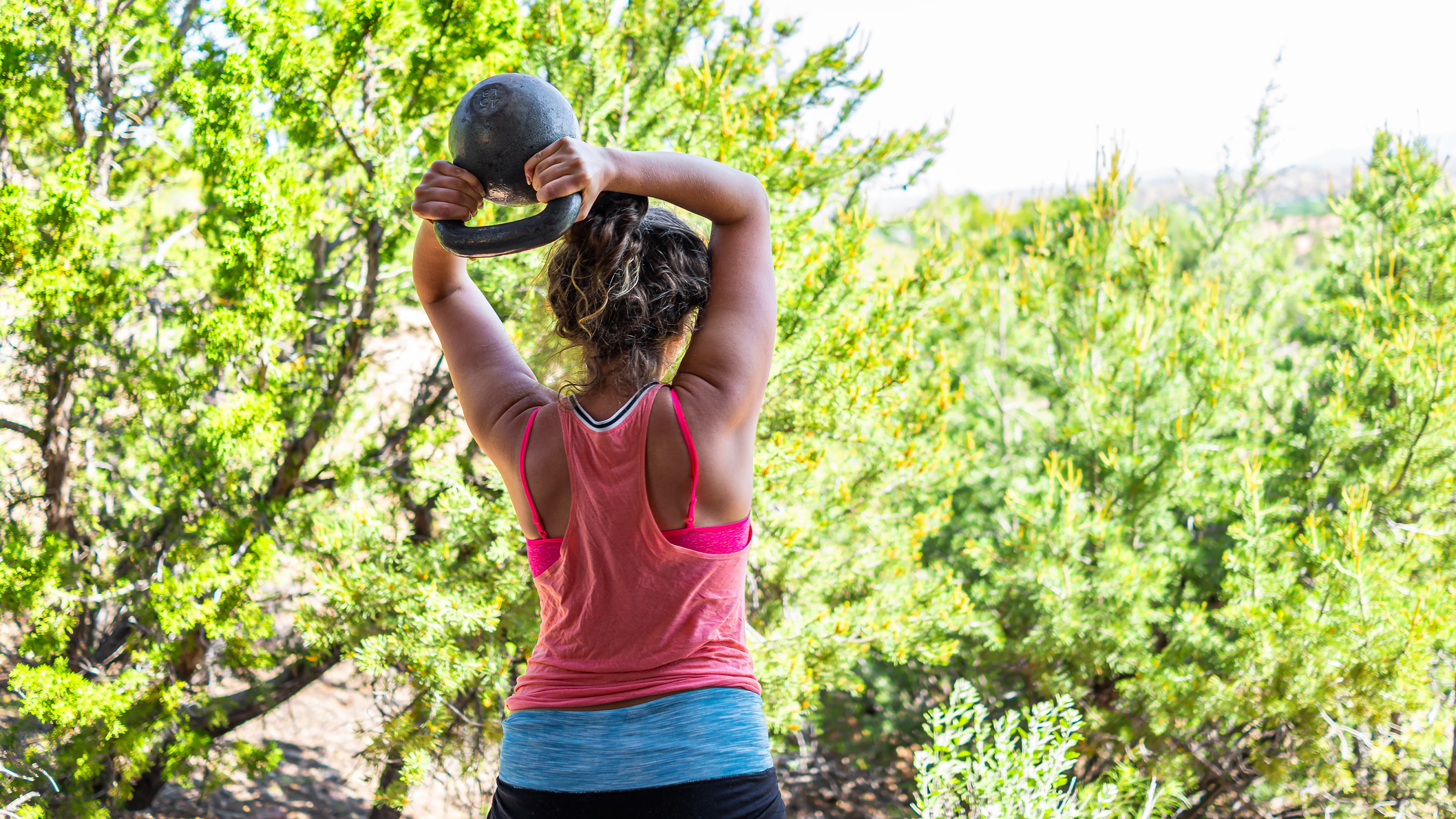
I’m a fully paid-up member of the kettlebell fan club. I think kettlebells are the most versatile piece of kit available for at-home workouts and I keep my collection of kettlebells in easy reach under a coffee table.
I’m always looking for new kettlebell exercises to try and kettlebell halos caught my eye. I assumed they’d be tough to do, but surprised myself when I gave one a go with a 6kg weight and found it easy.
After a bit of experimentation with an 8kg weight, I settled on the 10kg for this move and away I went.
How to do a kettlebell halo
The best type of kettlebell for kettlebell halos
I own cast-iron kettlebells and recommend this kind of kettlebell for this movement because it needs to be quite compact—some of the sand-filled plastic kettlebells can be a bit bulky.
My 10kg kettlebell is about half the size of my head, so I feel a little less like I’m maneuvering a boulder a la strongman Hafþór Júlíus Björnsson when I’m using it.
The handles are also small enough for me to maintain a secure grip—always helpful when moving heavy objects around your skull.

My experience adding kettlebell halos to my workouts
You need good spatial awareness, but this can improve it
My spatial awareness and proprioception are abysmal. I have ADHD, dyslexia and dyspraxia, all of which have elements of visual-spatial deficit that can make you clumsy, overcorrect your movements and generally struggle to know where your body is in relation to objects around you.
So why would I decide to try a kettlebell move that involves orbiting a weight around my skull? Because gently challenging your ability can help to improve it.
I went very slowly. It took me a few minutes to watch video demonstrations and copy the movement without a kettlebell before I felt confident replicating it correctly.
I chose a 6kg to begin with, concerned that I wouldn’t be able to maintain good form if it was heavier, but found that 10kg was a better fit for my strength levels.
After a few rotations, I grew in confidence, able to speed up a little without smacking myself in the ear or inadvertently pulling my hair.
I realized that the beauty of this movement, and why it works so well for strengthening, is that it requires a higher level of control to maintain proper form.

It improved my mobility
The first couple of times I tried the halo my shoulders creaked and popped, unused to overhead exertion.
I don’t often lift things over my head, even when working out, and realized I had been neglecting this area and my shoulder mobility was suffering as a result. I’m glad I didn’t discover this when trying to move boxes into the attic instead.
After a few strength sessions incorporating the halo, I could definitely feel the effect it was having on my shoulders. Post-workout, I could feel my traps had worked, which was new. My shoulders no longer make the noises they did when I first start moving, and feel stronger in general.
I can now access a larger range of motion under stress, because the supporting muscles and tendons of my shoulders are getting stronger.
Please note that if you experience pain or hear disconcerting noises when trying a movement, speak to a medical professional before continuing, otherwise you risk injury.







